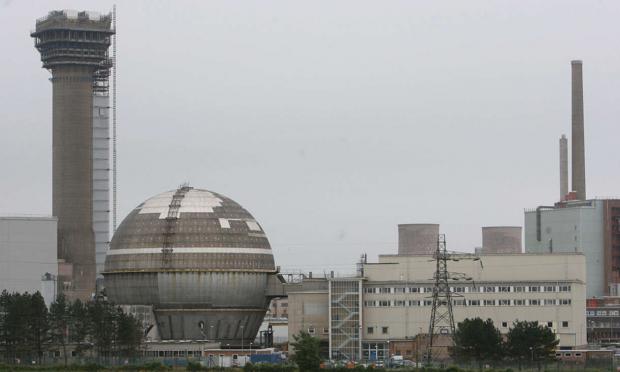Sellafield, the UK and Europe's most dangerous nuclear site, has a worsening leak from a huge radioactive waste silo that could endanger the public, the Guardian revealed today.
Safety concerns at the collapsing building, as well as cracks in a toxic sludge tank known as B30, have caused diplomatic tensions with countries including the US, Norway and Ireland, who fear that Selafield has failed to resolve the problems.
The leakage of radioactive liquid from one of the "highest nuclear hazards in the UK" - a decaying building at the vast Cambria site known as the Magnox Swarf Storage Silo (MSSS) - is likely to continue until 2050, the British newspaper writes. This could have "potentially significant consequences" if accelerated, with the risk of groundwater contamination, according to an official document cited by the Guardian.
Cracks have also developed in the cement and asphalt covering the huge tank containing decades-old nuclear sludge, part of a list of safety problems at the plant.
These concerns emerged in Nuclear Leaks, a year-long Guardian investigation into the massive nuclear dump.
Sellafield, a nuclear power plant spread over a 6 square kilometre site on the coast of Cumbria and employing 11,000 people, stores and processes nuclear waste from weapons programmes and nuclear power generation. As the Guardian report states, it is the largest such facility in Europe.
A document sent to Sellafield board members in November 2022 and seen by the Guardian raised widespread concerns about safety degradation across the site, warning of "cumulative risk" from failures ranging from nuclear safety to asbestos levels and fire hazards.
A scientist on a team of experts advising the UK government on the health effects of radiation told the Guardian that the risks posed by the leak and other chemical spills at Selafield were being "firmly pushed under the carpet".
A 1957 fire at Winchkale, as the site was formerly known, was the UK's worst nuclear accident to date. An EU report in 2001 warned that an accident at Sellafield could be worse than Chernobyl, the site of the 1986 disaster in Ukraine that exposed five million Europeans to radiation. Sellafield contains significantly more radioactive material than Chernobyl.
The report said that events that could cause an atmospheric release of radioactive waste at the plant included explosions and air accidents.
Such is the concern about safety standards that US officials have warned about the infrastructure in diplomatic cables seen by the Guardian. Among their concerns are leaks from cracks in concrete in toxic tanks and a lack of transparency from UK authorities about issues at the plant. The UK and the US have a decades-long relationship in nuclear technology.
Concerns over how the Sellafield plant is run have also led to tensions with the governments of Ireland and Norway, according to the Guardian.
Norwegian officials are concerned that an accident at the plant could result in a pile of radioactive particles being carried by the southwesterly winds that dominate the North Sea, with potentially devastating consequences for Norway's food production and wildlife. Tellingly, it is estimated that a radioactive cloud from Sellafield could reach the coast of Norway in less than 12 hours.
A senior Norwegian diplomat told the Guardian that they believe Oslo should offer to help fund the plant so it can operate more safely, rather than "running something so dangerous with a limited budget and no transparency".
The Irish government tried to take action against Sellafield by taking it to a UN tribunal in 2006 over concerns about the plant's impact on the environment.



